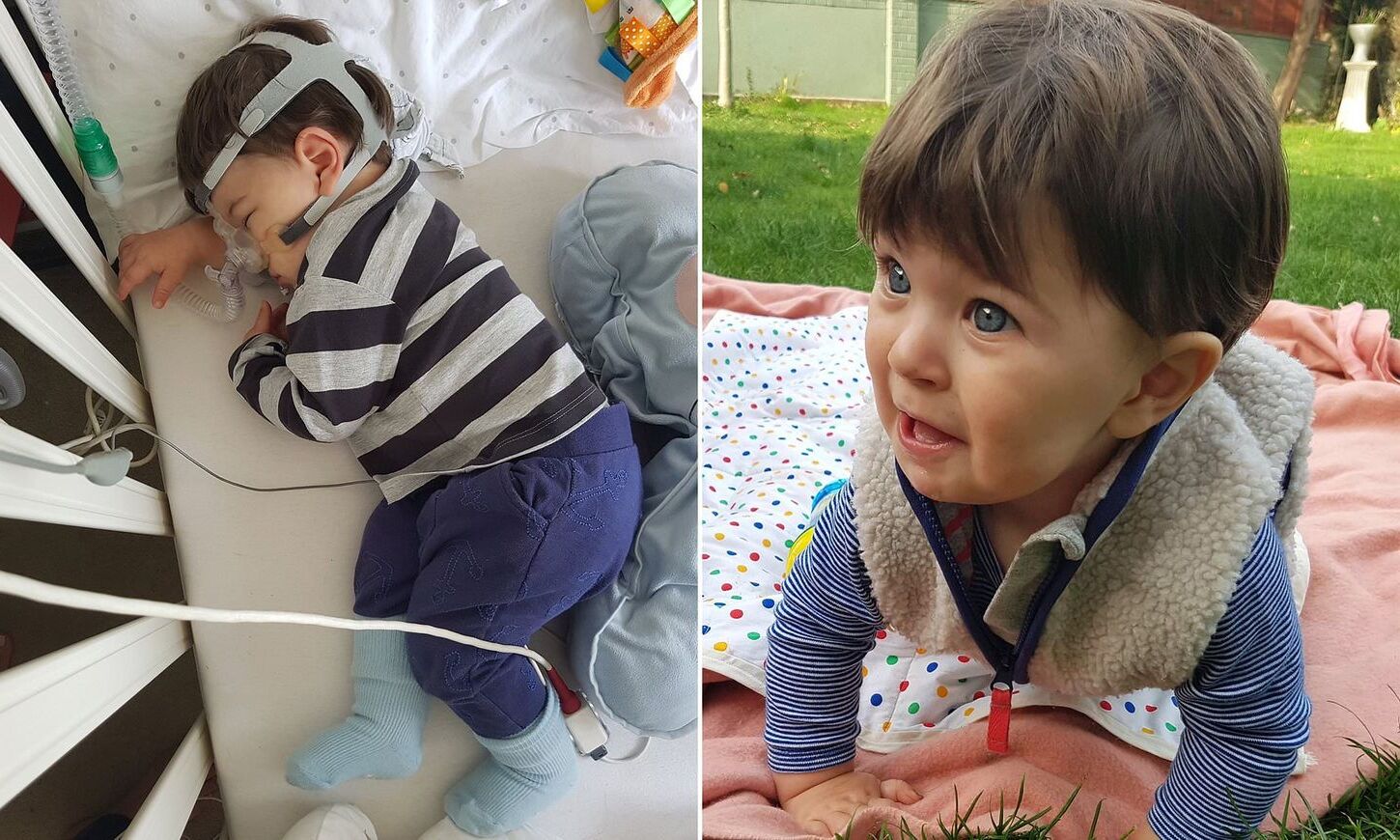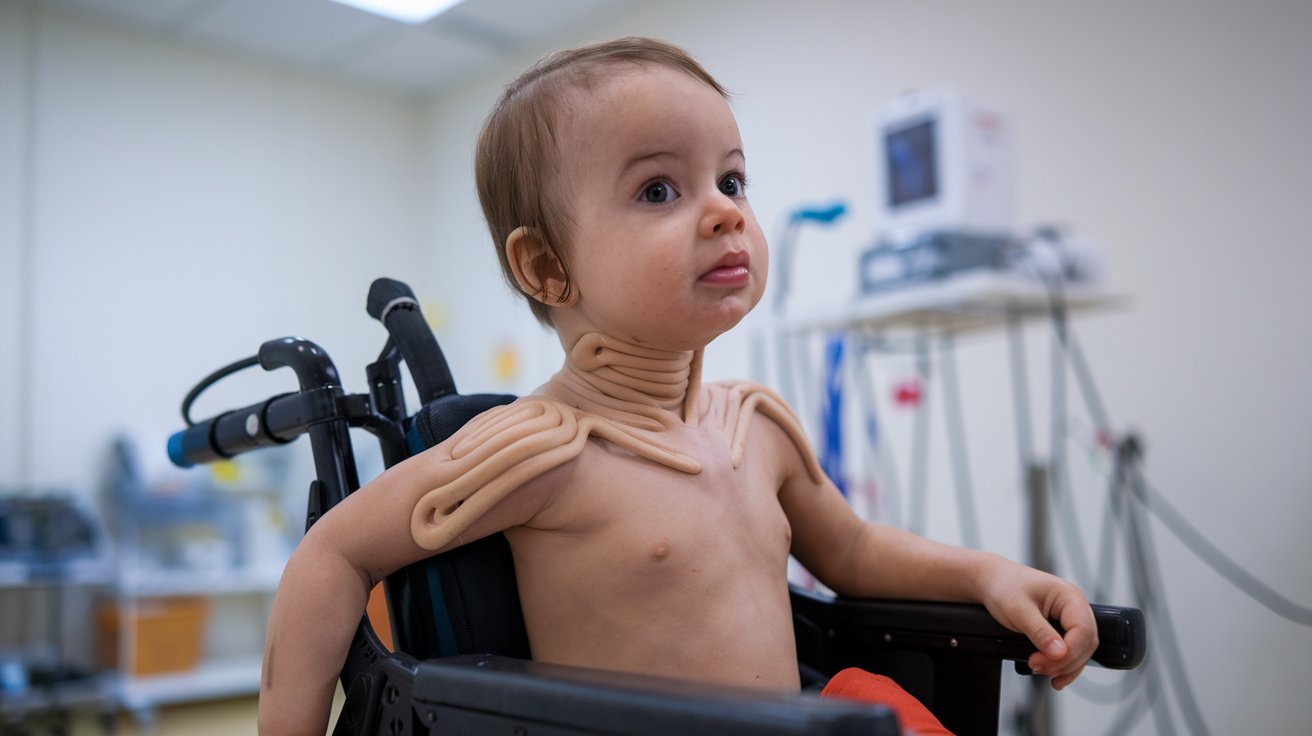
Congenital Central Hypoventilation Syndrome (CCHS) is a rare disorder that affects the body's ability to control breathing. Imagine having to remember to breathe every moment of your life. That's the reality for those with CCHS. This condition is present from birth and often requires lifelong management. CCHS is caused by mutations in the PHOX2B gene, which plays a crucial role in the development of the nervous system. Symptoms can range from mild to severe, including difficulty breathing during sleep, low oxygen levels, and even heart problems. Understanding CCHS is vital for those affected and their families. This post will explore 35 intriguing facts about Congenital Central Hypoventilation Syndrome, shedding light on its causes, symptoms, and treatments.
Key Takeaways:
- CCHS, also known as Ondine's Curse, affects breathing during sleep due to genetic mutations. With proper support and medical advancements, individuals with CCHS can lead fulfilling lives.
- Support networks, medical advances, and inspiring stories offer hope for individuals and families affected by CCHS. Ongoing research aims to improve understanding and treatment of this rare genetic disorder.
What is Congenital Central Hypoventilation Syndrome (CCHS)?
Congenital Central Hypoventilation Syndrome (CCHS) is a rare genetic disorder affecting the autonomic nervous system. This condition impairs the body's ability to control breathing, particularly during sleep. Here are some intriguing facts about CCHS.
-
CCHS is also known as Ondine's Curse, named after a mythological story where a nymph curses her unfaithful lover to forget to breathe when asleep.
-
The disorder is caused by mutations in the PHOX2B gene, which plays a crucial role in the development of the autonomic nervous system.
-
CCHS is extremely rare, with only about 1,000 known cases worldwide.
-
Symptoms often appear in newborns, who may exhibit shallow breathing or even stop breathing entirely during sleep.
-
Diagnosis typically involves genetic testing to identify mutations in the PHOX2B gene.
How Does CCHS Affect Daily Life?
Living with CCHS presents unique challenges. Individuals must take special precautions to manage their condition effectively.
-
Many individuals with CCHS require ventilatory support, such as a ventilator or diaphragm pacer, especially during sleep.
-
Regular monitoring of oxygen and carbon dioxide levels in the blood is essential to ensure proper breathing.
-
People with CCHS often need to avoid certain medications that can depress the respiratory system, such as sedatives and narcotics.
-
Physical activity must be carefully managed, as strenuous exercise can exacerbate breathing difficulties.
-
Despite these challenges, many individuals with CCHS lead fulfilling lives with proper medical care and support.
Medical and Technological Advances
Advancements in medical technology have significantly improved the quality of life for those with CCHS.
-
Diaphragm pacing systems, which stimulate the diaphragm to contract and facilitate breathing, have become a viable alternative to traditional ventilators.
-
Genetic research continues to explore potential therapies that could correct the underlying genetic mutations causing CCHS.
-
Non-invasive ventilation options, such as BiPAP and CPAP machines, offer more comfortable alternatives for nighttime breathing support.
-
Telemedicine allows for remote monitoring and consultation, making it easier for patients to receive specialized care.
-
Advances in neonatal care have improved early detection and intervention, leading to better outcomes for infants diagnosed with CCHS.
The Role of Support Networks
Support networks play a vital role in helping individuals and families cope with CCHS.
-
Organizations like the CCHS Family Network provide resources, advocacy, and support for those affected by the condition.
-
Online communities and social media groups offer a platform for sharing experiences, advice, and emotional support.
-
Educational programs help raise awareness about CCHS among healthcare professionals, ensuring better diagnosis and treatment.
-
Family and friends are crucial in providing day-to-day support, from managing medical equipment to offering emotional encouragement.
-
Support groups often organize events and conferences, fostering a sense of community and shared understanding among those affected by CCHS.
Challenges and Misconceptions
Despite increased awareness, several challenges and misconceptions about CCHS persist.
-
One common misconception is that CCHS only affects breathing during sleep, but it can also impact breathing during wakefulness in severe cases.
-
Some people mistakenly believe that individuals with CCHS cannot live independently, but many lead autonomous lives with the right support.
-
The rarity of CCHS can lead to misdiagnosis or delayed diagnosis, highlighting the need for greater awareness among healthcare providers.
-
Insurance coverage for necessary medical equipment and treatments can be inconsistent, posing financial challenges for families.
-
Public awareness campaigns are essential to dispel myths and promote understanding of CCHS.
Inspirational Stories
Many individuals with CCHS have inspiring stories of resilience and determination.
-
Some have pursued higher education and professional careers, demonstrating that CCHS does not define their potential.
-
Athletes with CCHS have participated in sports and physical activities, showcasing their ability to overcome physical limitations.
-
Artists and musicians with CCHS have used their talents to raise awareness and inspire others.
-
Parents of children with CCHS often become advocates, working tirelessly to improve care and support for their kids.
-
Stories of successful surgeries and medical interventions offer hope to newly diagnosed families.
Future Directions in CCHS Research
Ongoing research aims to improve understanding and treatment of CCHS.
-
Scientists are exploring gene therapy as a potential long-term solution for correcting the genetic mutations causing CCHS.
-
Research into the autonomic nervous system may uncover new insights into how CCHS affects other bodily functions.
-
Clinical trials are testing new medications and therapies that could enhance respiratory function in individuals with CCHS.
-
Collaborative research efforts are bringing together experts from various fields to develop comprehensive care strategies.
-
Patient registries and databases are helping researchers track the long-term outcomes of individuals with CCHS, guiding future treatment approaches.
Final Thoughts on Congenital Central Hypoventilation Syndrome
Congenital Central Hypoventilation Syndrome (CCHS) is a rare, life-long condition that affects the autonomic control of breathing. Understanding its complexities helps in managing the challenges faced by those living with it. Early diagnosis and intervention can significantly improve quality of life. Advances in medical technology, like ventilators and diaphragmatic pacers, offer better management options. Awareness and education about CCHS are crucial for early detection and support. Families and caregivers play a vital role in providing the necessary care and emotional support. Research continues to explore new treatments and therapies, offering hope for the future. By staying informed and connected with medical professionals, those affected by CCHS can lead fulfilling lives. Remember, knowledge is power when dealing with rare conditions like CCHS. Stay curious, stay informed, and support those around you.
Frequently Asked Questions
Was this page helpful?
Our commitment to delivering trustworthy and engaging content is at the heart of what we do. Each fact on our site is contributed by real users like you, bringing a wealth of diverse insights and information. To ensure the highest standards of accuracy and reliability, our dedicated editors meticulously review each submission. This process guarantees that the facts we share are not only fascinating but also credible. Trust in our commitment to quality and authenticity as you explore and learn with us.


